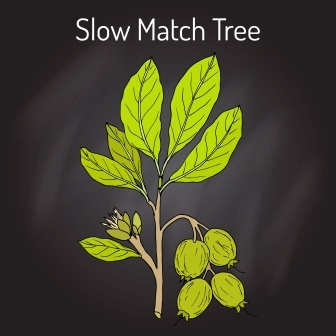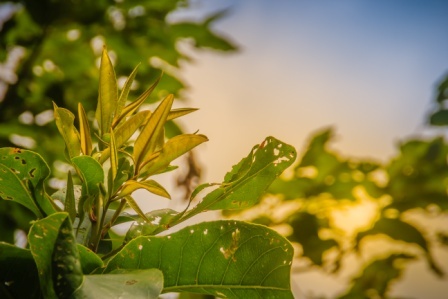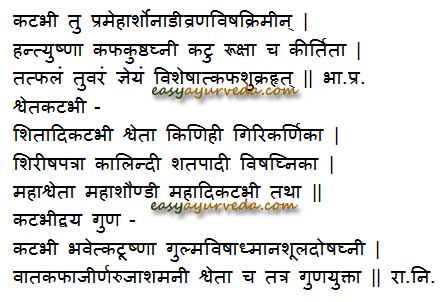Kumbhi Tree (Careya abrorea) Uses, Research, Medicines, Side Effects
Kumbhi tree – Careya arborea is an Ayurvedic herb used for the treatment of ulcer, cough, eruptions in the skin, wound and promotes digestion. Ceylon Oak, Kumbhika, Katabhi, Wild Guava are synonyms.
Latin name – Careya arborea Roxb.
Family – Barringtoniaceae

Table of Contents
Uses
Uses of Kumbhi Tree:
- The decoction prepared from the bark of Kumbhika is given in a dose of 30 – 40 ml in conditions of snake bite poisoning and scorpion bite.
- Cold infusion of the bark of Careya arborea is given in a dose of 30 – 40 ml to treat cough and fever.
- The powder of the bark of the tree is sprinkled over the wounds for quick healing.
- The leaves of Careya arborea is made into poultice and applied over wounds and ulcers for quick healing.
- The flowers of the tree is made into cold infusion and added with honey or sugar candy and given in a dose of 40 – 50 ml to women after delivery for quick healing of the wound occurred during delivery.
- Decoction or cold infusion of the fruit is given in a dose of 30 – 40 ml to promote digestion and cure cases of anorexia.
- The powder of the bark of Kumbhika is mixed with water and made into paste and this is applied over the skin area having ring worm/ eczema.

Properties, part used, dosage
Medicinal properties of Ceylon Oak:
Rasa (Taste) – Katu (Pungent)
Guna (Qualities) – Laghu (Light), Ruksha (Dry)
Vipaka – Katu (Undergoes pungent taste after digestion)
Veerya (Potency) – Ushna (Hot)
Karma (Actions) – Kaphahara (reduces vitiated kapha dosha)
Part used – Bark, Fruit, Flower
Dosage –
Decoction – 30 to 40 ml
Powder – 3 to 5 g
Morphology
Morphology of Careya arborea:
Careya arborea is a deciduous tree that grows up to 5 to 12 m high. Its leaves turn red in the cold season. Flowers are yellow or white in color that become large green berries. The tree grows throughout India in forests and grasslands.
Chemical composition
Chemical composition of Careya abrorea:
The bark of the plant contains lupeol, B – sitosterol, Betulin. Leaves contain tri terpinoid, lactone, careya genolide, malinic acid, 2 – hydroxyl ursolic acid and tannin. The fruit contains gum. The seeds contain alfa – spia sterol, alfa – spina sterone, sapo genol careya genol.
Sanskrit verse

Traditional description, Indications
Traditional description of Wild Guava:
Indicated in –
Nadi – sinuses
Vrana – Ulcers, wounds
Prameha – Urinary tract disorders, diabetes
Arsha – haemorrhoids
Krumi – worm infestation
Kapharoga – diseases of Kapha imbalance
Kushta – skin diseases
Shoola – abdominal colic pain
Ruja – pain
Ajeerna – indigestion
Fruit is –
Tuvara – astringent
Decreases Kapha
Decreases Shukra – semen, sperm
Adverse effect
No adverse effect is known or reported after the normal use of Kumbhika/
Interaction with medicines, supplements
Can this be used while taking Homeopathic medicine?
Yes. This product does not react with homeopathic medicine.
Can
this medicine be continued while taking supplements like multivitamin tablets,
Omega 3 fatty acids etc?
Yes. Generally, this product goes well with most
of the dietary supplements. However, if you are taking more than one product
per day, please consult your doctor for an opinion.
With western
medicines
Seek your
doctor’s advice if you are taking this product along with other western
(allopathic / modern) medicines. Some Ayurvedic herbs can interact with modern
medicine.
If both Ayurvedic and allopathic medicines are advised together, then it is
best to take Allopathic medicine first, wait for 30 minutes and then take the
Ayurvedic medicine.
Ayurvedic medicines
Ayurvedic medicines containing Kumbhika:
Sariva kalpa: It is a proprietary Ayurvedic medicine useful in the treatment of arthritis, oliguria, pimples, urticarial, nephritis, herpes, eczema, oedema, pruritus, dermatitis, psoriasis, allergic skin conditions and resistant urinary infections.
Research
Research articles related to Careya arborea:
Anti – cancer activity: In the present study anticancer activity of the methanolic extract of leaves of Careya arborea Roxb was on DAL model in rats was evaluated. Evaluation of the effect of drug response was made by the study of tumor growth response including increase in life span, study of hematological parameters, biochemical estimations, antioxidant assay of liver tissue and in vitro cytotoxicity. Experimental results revealed that Careya arborea Roxb extract possesses significant anticancer activity which may be due to its cytotoxicity and antioxidant properties.
In present investigation, anti – allergic activity was carried out on methanolic extract of leaves (CLA) and methanolic extract of fruits (CFA) of Careya arborea. The effect of methanolic extracts (100, 200 ?g/ml) of fruits and leaves were recorded on contraction induced by histamine and acetylcholine on isolated guinea pig ileum and isolated rat ileum, respectively. The CLA and CFA showed significant inhibition of contraction of guinea pig ileum (p<0.01, p<0.005) and (p< 0.01, p<0.005) rat paw volume inhibition.
Gastro – protective action: The 70% ethanol (EtOH) extract of C. arborea leaves (CALE) was investigated for its gastroprotective effect in different gastric ulcer models. CALE exhibited significant (p?<?0.01) dose – dependent inhibition of ulcer index in ASP 12.90–51.61%, EtOH 11.97–40.35%, PL 28.63–63.92%, and CRS 38.30–66.37%, respectively. A significant (p?<?0.001) decrease occurred in the level of H+K+ATPase, volume of gastric juice, and acid output. Simultaneously, the level of gastric wall mucus was increased significantly (p?<?0.05). The antioxidant enzyme levels of LPO and SOD were decreased with concomitant increase in catalase activity in CRS – induced ulcers.
Anti – bacterial action: The present study was planned to investigate the antibacterial activity of ethyl acetate, ethanol and hexane extracts of the fruits of Careya arborea Roxb. All thetested bacterial strains viz., Escherichia coli, Salmonella typhimurium, Listeria monocytogenes, Staphylococcus aureus and Staphylococcus epidermidis) were found to be sensitive to all the 3 concentrations of ethyl acetate and ethanolic extracts of fresh and dry fruit, in ascending order.
Classical categorization
Classical categorization of Ceylon Oak:
Sushruta samhita – Priyangvadi gana
Dhanvantari Nighantu – Guduchyadi varga
Bhavaprakasha – Vatadi varga
Kaiyyadeva Nighantu – Oushadhi varga
Raja Nighatu – Prabadradi varga
Scientific classification
Kingdom: Plantae
Order: Ericales
Family: Lecythidaceae
Genus: Careya
Species: C. arborea
Vernacular names
Names in different languages of Kumbhi Tree:
Hindi name – Kumbhi, kamba, Vakamba, Kumbhi tree
English name – Wild guava, Ceylon oak, Patana Oak, Slow Match Tree
Bengali name – Vakumba
Gujarathi name – Kumbi
Kannada name – Daddala, Daddippe
Malayalam name – Peelu, Peeru, Aalam
Oriya name – Kumbhi
Tamil name – KUmbhi, Aimaa
Telugu name – Araya, Buda burija, Govadi
Garo name – Dimbil
Sanskrit synonyms
Sanskrit Synonyms of Wild Guava:
Kumudika – Flowers are beautiful like night lily
Kumbi – It possesses plenty of juice.
Sri Parnika – Its leaves appear very beautiful
Swadu pushpa, Katphala, Kumuda, Somavalka, Bhadra, Maha kumba
Katabhi, Madhurenu, Katambhara, Nabhika, Shoundi, Patali, Kinihi,
Madhurenu, Kshudra Shama, Kaidarya, Shamala Nava
Author: Dr.B.K.Prashanth M.D (Ayu), Ph.D
E mail: [email protected]
Click to consult Dr Prashanth BK











2 comments
Anonbel G Momin
This tree is plenty in our place…we called it Dimbil in Garo
Dr J V Hebbar MD(Ayu)Author
That’s wonderful to know. Thanks.